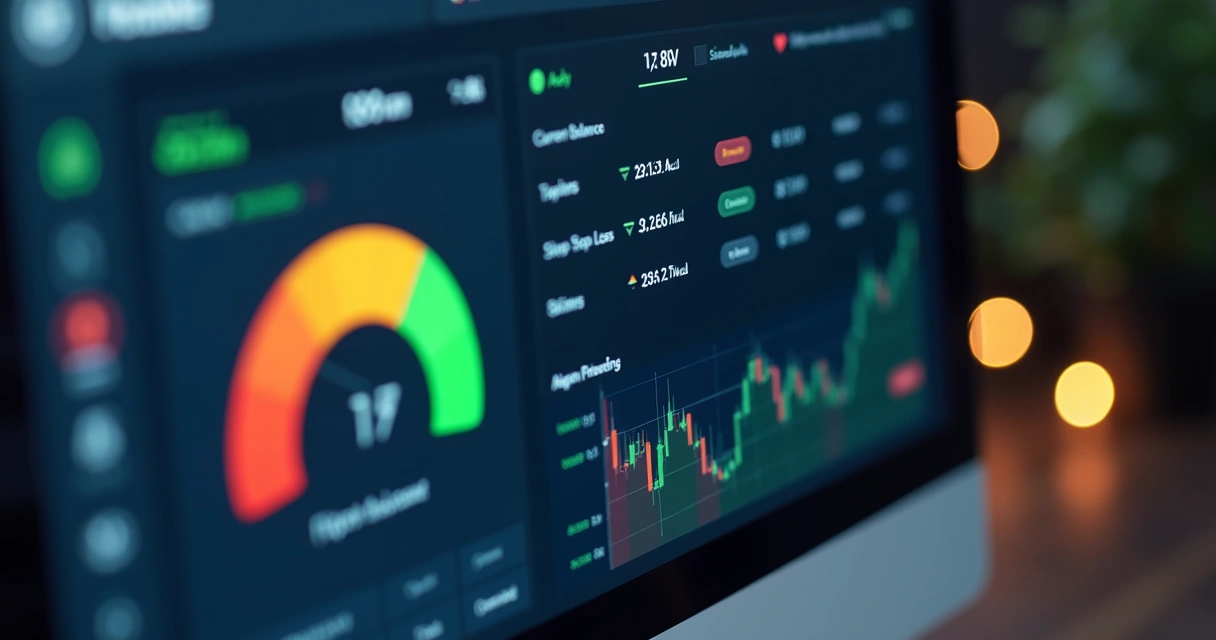Opportunities for traders have never been more accessible. The internet is full of resources, platforms, and communities for those interested in the financial markets. Yet, for many people, the biggest hurdle isn’t lack of skill or effort, it’s the challenge of raising enough capital to make trading worthwhile. Imagine being able to operate with significant funds without the risks typically associated with putting your own savings on the line. This is where the concept of proprietary trading organizations, often called ‘prop firms,’ becomes appealing.
Throughout this article, the subject will be guided step by step through what it means to get funded, advance through evaluation processes, grow an account, and build profits working with a prop trading structure. There will be moments of practical insight, cautionary tales, and clear, actionable guidance. The perspective taken mirrors one in which the reader is eager to understand, cautious about pitfalls, and determined to find a rewarding path in trading.
What is a prop firm account?
An individual trading account with a proprietary trading organization is not like a classic personal brokerage account. Instead, the trader is offered access to the company’s capital, under specific rules and a defined arrangement, for the purpose of trading in financial markets.
The prop trading structure is simple at its core: a trader gets to operate with someone else’s money, sharing in the profits, but limited by risk controls and often, by specific evaluation methods before real funds are assigned. It’s a method that allows talented operators to access the playing field of professional finance, without first accumulating a large nest egg.
Firms like Institutional Trading Academy (ITA) specialize in providing these arrangements. They bring together education, mentorship, an evaluation program, and risk capital. The trader’s role is to show skill and consistency, typically first in a simulated or demo environment, before advancing to real-money trading.
Gain access to capital you couldn’t otherwise reach.
How prop trading firms support traders
While at first glance, it might seem that these organizations do little more than supply money, the reality is more involved. Genuine proprietary trading entities also supply structure, support, feedback, and a set of standards or rules that protect their capital and encourage sound trading behavior.
- Education and training: Many prop firms offer not just access to money, but frameworks for learning to operate in various market conditions.
- Simulated evaluation: Accounts start on a demo or simulation, allowing assessment of skill, discipline, and strategy without real risk.
- Risk management rules: Most enforce stop-losses, maximum drawdowns, or other guardrails, in line with recognized risk guidelines, a principle also emphasized in educational resources from the U.S. SEC’s introduction to investing.
- Community and mentoring: Peer support, analysis, and mentorship are hallmarks of environments like the one offered by Institutional Trading Academy.
- Profit arrangements: Instead of paying commissions or fixed fees only, the compensation model usually involves a split of profits, aligning interests between firm and trader.
Understanding the partnership nature
This kind of structure means that traders are never solitary. They may develop strategies on their own, but their success often depends on complying with the prop firm’s guidelines, learning from others, and participating in a supportive network. With projects such as ITA, the trader gets a sense of belonging to a broader mission, not just an isolated quest for income.
Trading capital plus support, a recipe for growth.
What types of accounts and programs exist?
Proprietary trading organizations offer a variety of pathways for traders. Though there are differences between providers, some common structures include:
- Simulated challenges or evaluation programs: The most familiar route, these require traders to hit goals in a simulated environment (sometimes over a defined period), while obeying strict risk controls.
- Instant-funded or “instant” accounts: Rather than requiring an extended evaluation, some organizations will give traders access to live funds immediately, typically with slightly different rules or at higher cost.
- Scaling plans: Many programs permit successful operators to gradually increase account size and leverage as long as they meet profit targets and risk-control rules.
- Multiple market offering: Accounts are commonly available for forex, indices, commodities, sometimes even stocks and futures, depending on the firm’s structure and connections.
- Specialty programs: Some offer tailored accounts for algorithmic trading, swing trading, or even multi-trader teams.
 Why so many options?
Why so many options?
The diversity of account types exists because traders approach the markets with different backgrounds, skills, and preferences for risk. Some have experience and want to “hit the ground running.” Others prefer a more gradual route that allows time to learn and refine their technique. ITA, for instance, places a strong focus on matching account type to the individual’s needs and trading style, remaining flexible as those needs evolve.
Breaking down the account funding process
It’s not enough to simply ask for a trading account. Nearly all serious organizations require proof of ability, caution, and consistency. This usually takes the form of a two-step or multi-phase process, which might include:
- Application and onboarding: Submission of documents, agreement to policies, and often a short interview or written statement of goals.
- Evaluation or “challenge” phase: This is a defined testing ground. The trader operates in a simulation, tasked with reaching profit milestones while staying within risk limits. Parameters may include:
- Minimum and maximum trading days
- Profit targets (for example, 8% within a month)
- Maximum daily/overall loss (such as 5% in a day, or 10% overall)
- Consistent position sizing rules
- Limits on trading news events or certain hours
- Verification phase: Sometimes a second stage is included, requiring demonstration of repeatability and disciplined risk management.
- Live funded account: On successful completion, the trader is moved to a real capital account, though often with a probationary period where rules remain strict.
The process stresses not only profitability, but also discipline, risk control, and psychological resilience. Firms like ITA design their evaluation and on-boarding phases with the explicit aim to encourage long-term, repeatable success, rather than short-term luck.
 What are the common criteria for advancement?
What are the common criteria for advancement?
- Demonstration of consistent risk-per-trade sizing
- Completion of minimum required trading days
- Adherence to firm-specified max loss and drawdown rules
- Achievement of profit targets without “cheating” (like over-leveraging in the final hour)
- Proof of operating according to established guidelines, not relying on luck or violating process
- Discipline beats bravado every time.
Key differences in prop funding models
Not every prop capital deployment model is alike. The biggest variations tend to be:
- Profit split arrangements: Common splits range from 50–90% in favor of the trader. Often, the split becomes more generous as the trader advances and proves consistency.
- Evaluation/challenge fees: Some charge a one-time or recurring assessment fee to offset the risk and administrative costs associated with onboarding new traders (sometimes refundable upon passing, sometimes not).
- Scaling and account growth rules: Policies differ regarding how quickly and by how much the trader may access more funds or increased leverage. The reward for strong performance is often a higher account limit.
- Pricing for instant-funded accounts: Some will accept a higher upfront payment or deposit to skip the full challenge process, but usually require stricter compliance, lower leverage, or different payout timing.
- Market access: Depending on the provider’s infrastructure, accounts may be available for currency pairs, indices, commodities, stocks, or even cryptocurrency markets.
Traders exploring their options should carefully compare terms, as not all profit-sharing models, risk controls, or available markets will align with their trading style or personal goals. Information provided by the U.S. SEC’s investing fundamentals guide can also help in grasping the nuances of trading arrangements.
 Comparison factors: What sets prop firms apart?
Comparison factors: What sets prop firms apart?
Because the prop trading landscape is diverse, what distinguishes one organization from another is not always obvious. Beyond mere access to capital, several criteria should be considered:
- Educational offerings: Do they offer structured learning, resources, or mentoring, like ITA’s institutional-focused programming?
- Community and support: Is there an active network of peers, forums, webinars, or Slack/Discord groups?
- Transparency of rules and fees: Are terms clearly communicated? Are there any hidden costs, withdrawal minimums, or other limitations?
- Trading platform choices: Does the firm offer industry-standard software (MetaTrader, NinjaTrader, TradingView), custom in-house solutions, or multiple options?
- Withdrawal and payment policy: How fast can profits be withdrawn? How are taxes, compliance, and reporting handled?
- Scalability: Is there room to grow and is the path to bigger accounts clearly defined?
- Performance incentives: Are there bonuses, contests, or advanced tracks for the best traders?
- Look beyond the money, find the right fit for long-term growth.
Trading discipline and risk management within funded accounts
If there’s a single trait that separates successful funded traders from those who crash out, it’s not chart-reading or hot tips. It’s risk discipline. The reality is that most blown accounts (personal or proprietary) result from traders exceeding reasonable limits, the very thing the prop model seeks to prevent by imposing rules on loss, leverage, and trading behavior.
Risk management isn’t only about technical limits; it’s a mindset and habit system.
- Establishing daily and overall drawdown limits
- Using stop-loss orders consistently
- Position sizing in proportion to account balance
- Avoiding overtrading and gambling behaviors
- Keeping a detailed trading journal
- Maintaining emotional neutrality, especially after losses
The FINRA day trading guide outlines the risks and regulatory pitfalls associated with excessive trading. Meanwhile, studies such as the joint SEC/CFTC staff report on the May 6, 2010 ‘Flash Crash’ underline why strict controls and discipline are not negotiable in highly leveraged, fast-moving markets.
Institutions like ITA incorporate these realities into their risk management training, focusing not only on the ‘what’ but on the ‘how’ and ‘why’ of discipline. Students at ITA undergo practice that mimics live pressure, with mentoring to help decode behavioral traps.
 How scaling and account growth works
How scaling and account growth works
Perhaps one of the most appealing features of the prop firm model is the possibility to grow not only profits, but the size of the capital account itself. Scaling plans reward consistency, rather than spectacular single trades, letting traders access larger volumes over time.
Typical steps to scaling might include:
- Start with an initial funded account (for example, $25,000)
- Reach a profit milestone (such as a 10% net gain) over a set period while remaining within drawdown rules
- Request or automatically receive a limit increase (the account could double to $50,000, then $100,000, and beyond, at preassigned checkpoints)
- Profit splits and withdrawal limits may also be revised favorably as trust grows between trader and firm
It bears repeating that the path to account scaling favors patience and methodical progress over urgency. The trader who builds slowly tends to last longer and see higher aggregate profits.
Consistent growth beats occasional fireworks.
Platforms, software, and trading tools
Technology is the backbone of every modern trading operation, and proprietary trading structures are no exception. Those seeking funded accounts should become familiar with the standard platform choices and the specialized tools often provided by reputable institutions.
- MetaTrader (MT4/MT5): The ubiquitous charting and execution suite for forex and CFDs, with scripting and automation ability.
- NinjaTrader: Favors futures traders, offering in-depth analysis, custom indicators, and strategy development tools.
- TradingView: Web-based charting with social features, popular for both novice and experienced market participants.
- Proprietary platforms: Some firms have bespoke software, designed for ultra-fast execution or special types of risk monitoring.
- Risk dashboards: Interfaces that show real-time account metrics, max daily loss, progress to profit goals, and analyze trade statistics.
- News and alerts integrations: Automated newsfeed and volatility warnings help inform when to reduce risk exposure or pause trading.
 ITA, for example, provides access to industry-standard software with comprehensive guides, and arranges live platform walkthroughs for members. Integration of educational content with platform-specific tips means even newcomers quickly find their feet in complex environments.
ITA, for example, provides access to industry-standard software with comprehensive guides, and arranges live platform walkthroughs for members. Integration of educational content with platform-specific tips means even newcomers quickly find their feet in complex environments.
Perks: Community support, bonuses, and growth programs
There is a reason why traders often speak of being “in the right room.” The best proprietary trading models provide more than just technical support and capital. They create a culture of encouragement, accountability, and steady improvement. Here are some of the reasons traders often stick with these environments:
- Peer community: Forums, chat rooms, and review sessions bring together like-minded individuals.
- Mentoring and feedback: Access to experienced trainers shortens the learning curve and helps overcome psychological hurdles.
- Performance bonuses: Sometimes, firms will award extra payout percentages, prizes, or additional capital to exceptional traders.
- Trader development programs: Structured paths from beginner to pro-level, regular check-ins, and tailored coaching (such as those found at ITA).
- Affiliate and recruiting programs: For traders who help bring others into the fold, some firms grant rewards or commission structures. Information on such partnerships can be found on the affiliate program page.
- A strong community is worth its weight in capital.
In fact, having a support network to consult after drawdowns or during setbacks is one of the best predictors of long-term trading survival, something often overlooked by those drawn only by headlines about large profits.
 Practical steps for passing a trading evaluation
Practical steps for passing a trading evaluation
Every evaluation challenge has its own flavor, but successful traders tend to follow a repeatable set of principles applied in nearly all situations. Based on methodologies promoted in top educational programs (and at institutions like ITA), consider these steps:
- Read the rules, twice: Many traders are tripped up not by bad trades, but by missing a rule they didn’t know existed.
- Build a written plan: Know exactly what your entry criteria, position sizing, and risk limits are. Write them down and review daily.
- Start slow: Take smaller initial trades to learn how the simulated environment behaves and iron out technical issues.
- Track every trade: Keep a detailed log, including rationale, entry/exit, win/loss, and emotions felt.
- Protect the downside: Respect max loss rules strictly, even if it means missing profit targets early on.
- Check platform time zones and trading hours: Some evaluation platforms have cutoffs or maintenance windows that can catch the unwary.
- Take breaks after bad runs: A day off can save a challenge that was wobbling after a losing streak.
- Don’t rush the finish: If ahead of schedule on profit, maintain discipline rather than swinging for the fences with risky late trades.
Practical guidance like this—and more—is discussed in the test preparation category at Institutional Trading Academy’s website. These tips are rooted in an understanding of practical trading psychology, as discussed in FINRA and CFTC educational materials, both linked earlier in this article.
Tactics for maintaining growth and consistency in funded accounts
Passing a challenge is only the start. The real work, and real income, comes down the line when staying funded over months and years. The following tactics are central to that journey:
- Continue with a trading journal beyond the evaluation
- Schedule regular self-reviews or peer reviews of trading performance
- Adapt to market context—cut risk during volatility spikes, for example
- Revisit rules after big wins as well as losses, to avoid overconfidence, a phenomenon documented in materials from the CFTC Education Center
- Participate in ongoing educational programs and webinars (such as those highlighted on the ITA about page)
- Take partial withdrawals at milestones, reminding oneself to “bank” wins
- Long-run profits come from boring consistency, not heroic bets.
 The role of regulatory and behavioral education
The role of regulatory and behavioral education
Operating with someone else’s risk capital isn’t just a numbers game, it means understanding the wider landscape of rules, compliance, and the psychology of market operations. For traders joining organizations like ITA, familiarization with standards set out by regulatory resources (again, see the U.S SEC’s educational introduction and FINRA’s day trading advisory) is not just “good to know”; it’s required reading.
- Awareness of margin and leverage rules affecting strategy
- Understanding how liquidity events or “flash crashes” can create gaps and cascading losses
- Respect for reporting requirements, payment of taxes on payouts, and accurate record-keeping
- Preparation for the psychological “whiplash” that can accompany big swings in account value
Experienced trainers at projects like ITA are careful to point members toward real-world regulatory content and to frame lessons not merely in profit terms, but in terms of risk, ethics, and self-preservation.
 What sets Institutional Trading Academy apart?
What sets Institutional Trading Academy apart?
Not all funded account programs offer the same level of support, education, or opportunity for development. Institutional Trading Academy has risen, in part, because of its dedication to a supportive community, robust trader training, fast-track account scaling, and real mentorship. Its learners can access everything from beginner guides, advanced proprietary content, structured challenges, instant accounts, and active affiliate opportunities. Those searching for specifics about ITA’s philosophy, services, or approach can find many answers in their FAQ section, company background, affiliate opportunities, evaluation tips, and through feedback on their community engagement.
No program is one-size-fits-all. What matters is finding the arrangement, account type, and path to professional growth that best matches one’s own temperament, risk appetite, and goals, without ever putting reckless gambling ahead of disciplined, thoughtful participation.
Growth is a journey. The right prop firm lights the way.
Conclusion: Take the next step toward professional trading
A successful career as a funded trader is possible. What it takes is curiosity, structure, and the drive to keep improving with every challenge. Proprietary trading organizations have opened the door to the fast-paced world of finance for traders of nearly any starting background. But behind every “overnight” success, there are months or years of learning, evaluating, and staying the course when markets test conviction.
Projects like Institutional Trading Academy are tailored for individuals ready to move beyond lone experimentation toward disciplined, long-haul progress. Whether the interest lies in a first simulated challenge or advancing to larger capital accounts, the keys will always be risk discipline, continuous learning, and a supportive network.
To get started on the path to accessing larger trading capital, skill-building programs, and a thriving trader community, sign up with Institutional Trading Academy and see what the right environment can unlock for your growth and profit potential.
Frequently asked questions
What is a prop firm account?
A prop firm account is a trading account funded by a proprietary trading company rather than the individual trader’s own capital. In this arrangement, the trader gains access to the firm’s money under pre-set rules, and any profits are shared as per an agreed percentage. These programs are designed so that traders can operate in financial markets without risking their life savings, and are required to follow risk management limits, often including an evaluation period before being granted full access to funds.
How do I get funded by a prop firm?
Getting funded by a prop trading organization typically requires completing an evaluation challenge, where the trader proves their skill and discipline on a simulated or demo account. The standard process involves submitting an application, agreeing to the firm’s guidelines, reaching defined profit targets under realistic risk constraints, and often surviving a probation period before receiving access to a live capital account. Some firms offer instant funding options for a higher fee, but the core idea is to demonstrate reliable trading and risk management before handling real money.
Is trading with a prop firm worth it?
For many, trading via a proprietary structure is a way to access opportunities that would otherwise require a substantial bankroll. The value comes from being able to scale up, receive mentoring, use professional-grade software, and participate in an active trading community while keeping personal risk capped. Like any financial pursuit, it’s not without pressure—discipline and compliance with the rules is mandatory, and not all pass the initial evaluation. However, for those prepared to apply themselves carefully, the advantages can far exceed what’s achievable via solo trading with limited capital.
What are the best prop trading firms?
Since each trader’s needs differ, the best fit varies individually. Some prioritize education, others look for flexible profit splits or specific market access (such as forex, indices, or futures). Institutional Trading Academy stands out for its commitment to trader development, multi-level funded accounts, rich mentorship, instant challenge options, and active community. What sets strong organizations apart are transparent rules, robust support, and room to grow in both skill and capital allocation.
How can I increase profits with prop firms?
Sustained profits with prop accounts arise from consistency, risk control, and steady account scaling—rather than high-frequency risk-taking. Develop and stick to a written trading plan, participate in ongoing learning, and review trades regularly. Take advantage of educational programs, mentorship, and community analysis pools to refine tactics. If the firm has scaling plans or performance bonuses, strive to meet targets gradually, safeguarding both profits and the qualifying status of the account. Continuous improvement, not a single “big win,” drives aggregate earnings over time.

